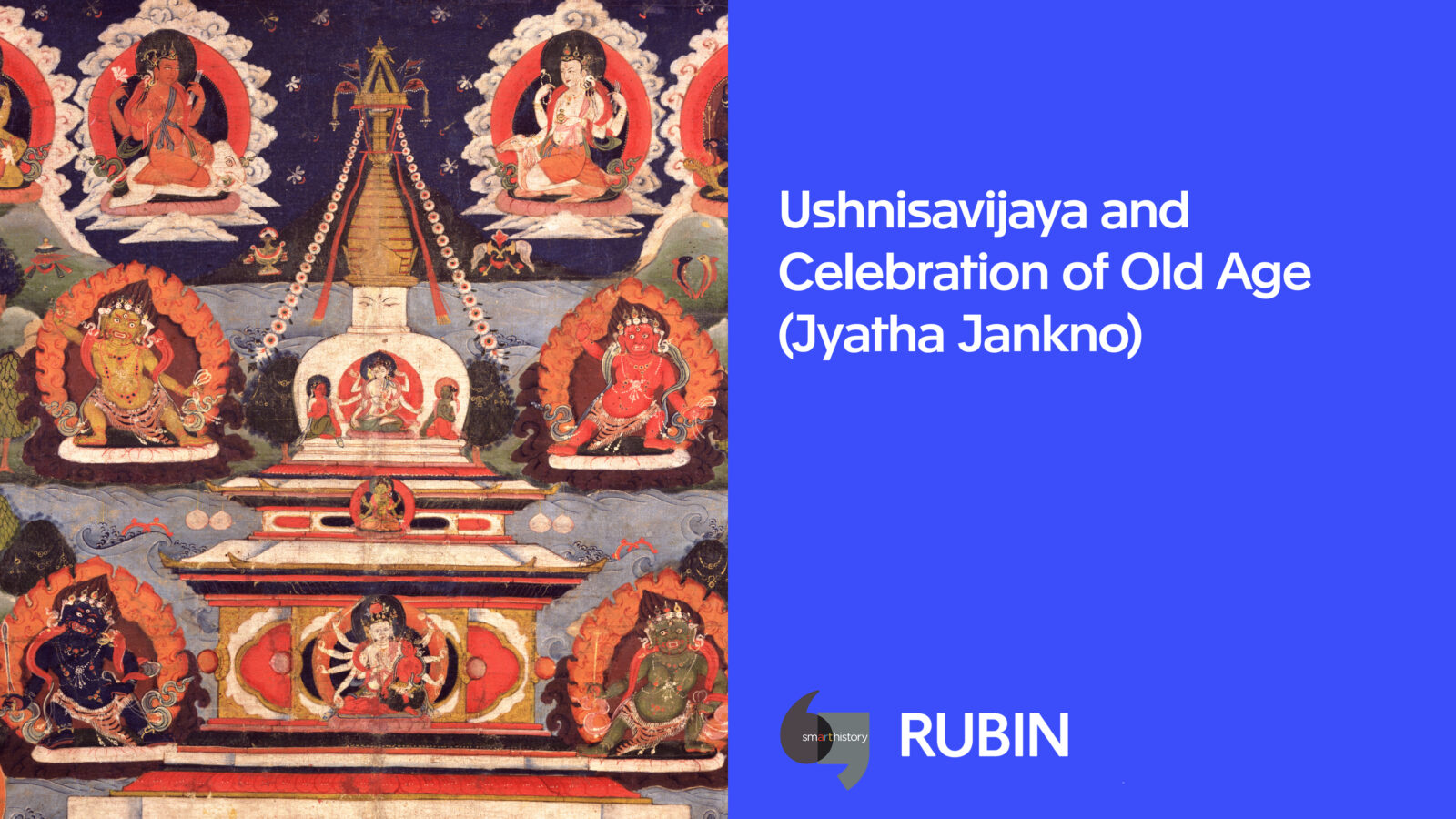Nepal
19th century
Nepal
19th century
The Chariot Ritual (Bhimarata) is commonly performed in the Kathmandu Valley to celebrate the long life of an elder who has lived 77 years, 7 months, 7 days, 7 hours, and 7 minutes. To commemorate this day, Buddhists commission a stupa, an architectural monument for relics. If unable to build a full-sized stupa, the family may sponsor a painting (paubha) like this one. This painting depicts the Bhimarata rite and its auspicious wishes for the elder’s future life. The key figures in this composition, starting from the top, are the Five Transcendent Buddhas. Below them are the ten astrological deities, representing the passage of time. At the center of the painting is a stupa, in the center of which is the long-life deity Ushnishavijaya (Victorious Crown Ornament Goddess) representing a continuing long life for the elder. In the lower register, the elder along with family members parade in a chariot through the city and perform religious services and offerings in front of a stupa.

A virtuous feeling and deep respect toward an authentic teaching, teacher, or path. Buddhists believe that expansive study, analysis, and meditation are essential steps for cultivating a healthy and enduring devotion.
The functioning of cause and effect across time. Buddhists believe that everything we experience is the result of past actions, and everything we initiate has future consequences. Karma encourages actions to bring about positive outcomes and a better future.
Prescribed practices that carry symbolic meaning and value within a specific tradition and are intended to attain a desired outcome. Rituals are usually done as part of a ceremony or regular routine.
The Himalayan kingdoms of the Kathmandu Valley were significant centers of Buddhist culture. Nepalese kings, Buddhist institutions, and ordinary people patronized the vibrant art guilds. The artistic traditions of the regions are well-known in Tibetan areas and beyond, and Newar artists have always been in high demand throughout Tibetan regions and Inner Asia.
Get the latest news and stories from the Rubin, plus occasional information on how to support our work.